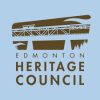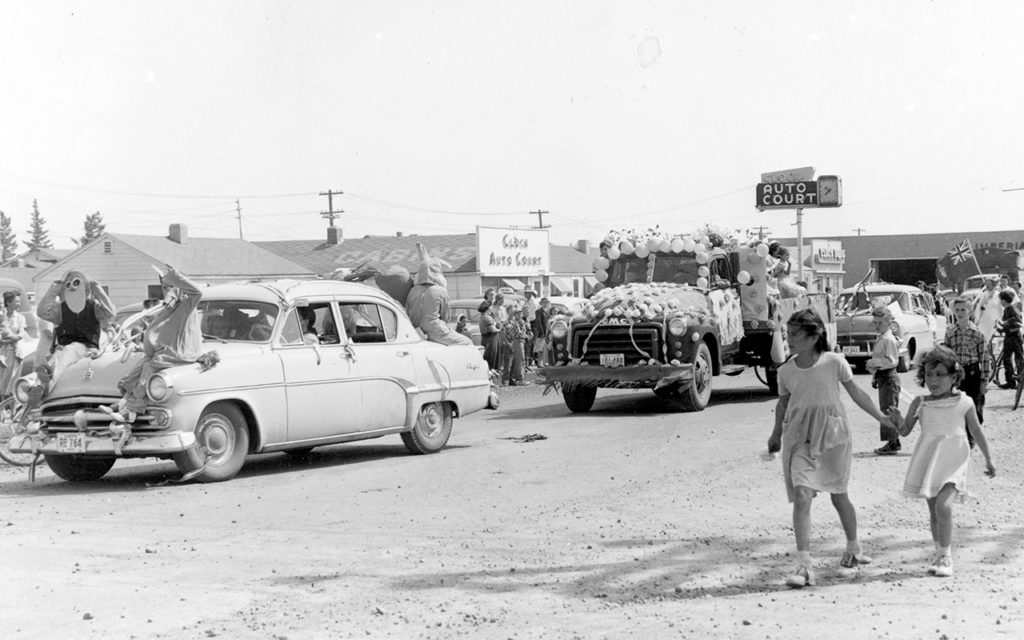
Paula E. Kirman
For this issue, we decided to look at the history of Jasper Place in the words of people who lived in the area prior to amalgamation with Edmonton. Questions requesting people’s memories of experiences and events in Jasper Place were posted on a number of social media platforms. For reasons of privacy, only first names are being used. Quotes have also been edited for grammar and clarity.
Myra: “I was born in an Edmonton hospital but raised in Jasper Place (Meadowlark School area). I remember the Jasper Place sign used to be on top of the Revolution Cycle store on Stony Plain Road. We got our first puppy from the pet store in that strip by the bowling alley.”
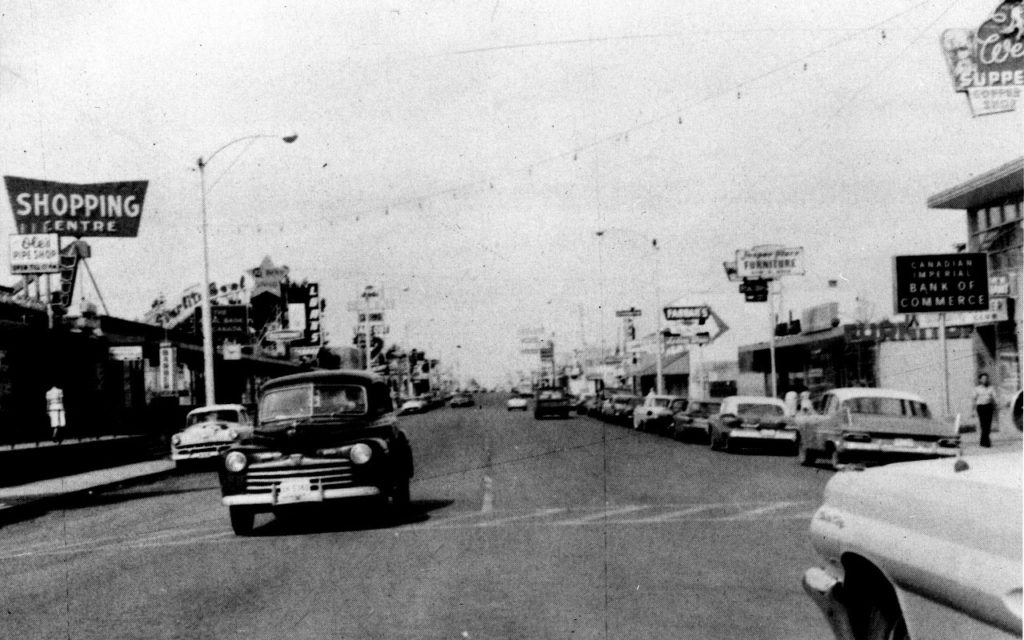
Joe: “In the winter I would walk over to Loblaws, grab some cardboard, and go tobogganing just to the right of Loblaws (before the ravine was filled in). In the early days, JP had a lot of older housing that utilized outhouses. Well, a couple of buddies and I would go out and tip outhouses. We also used to bumper ride the buses and cars too, if the windows were frosted up. But best of all, I remember going shopping on Saturdays with the parents on Stony Plain Road (better known as “The Strip” back then).”
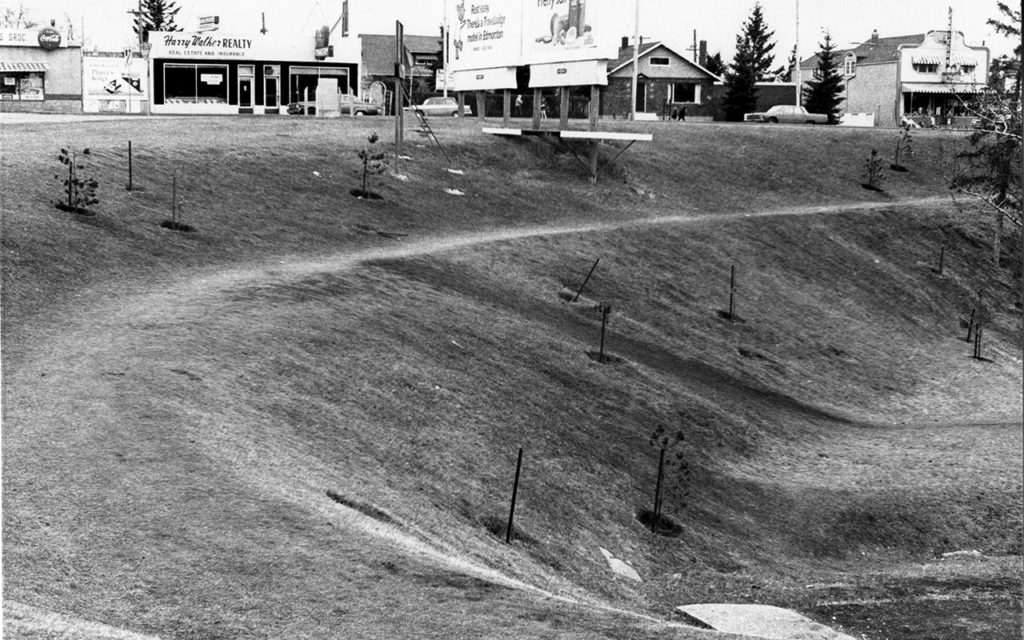
Donna: “After sledding season, that ravine was paved with cardboard. We spent hours and hours there. I remember the annual fair on the Case land on 151st Street and 100th Avenue which I attended in 1956 or 1957. We lived just one block west of that fair. One lucky boy on our street got paid to peel some potatoes for a food hut.”
Terry: “Before Loblaws. the Case house was down on the Creek. They filled it in and built Loblaws, to compete with Safeway.”
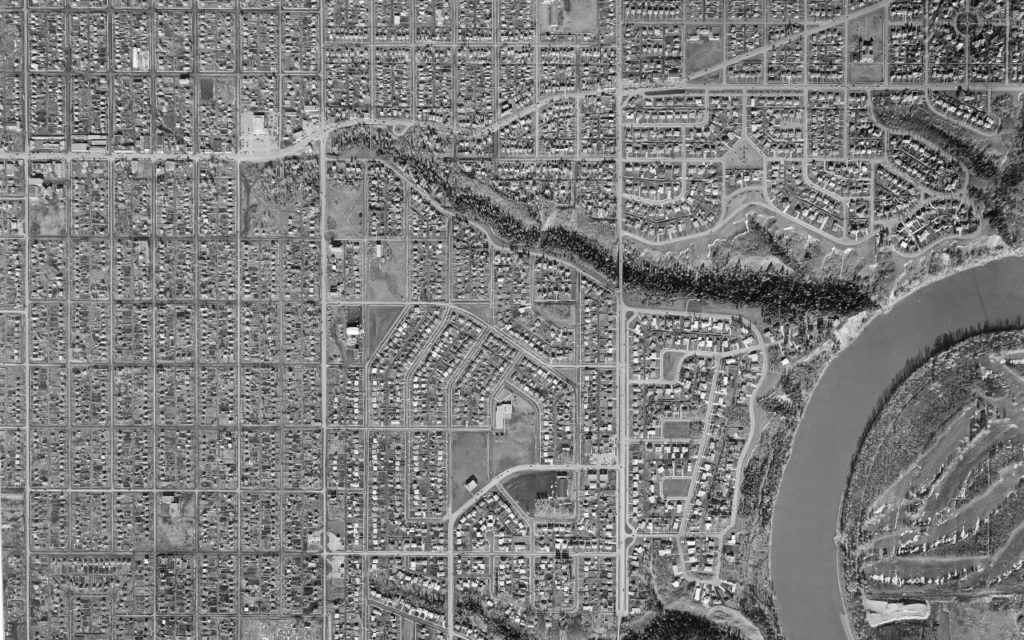
Sara lived on 156th Street in Edmonton after amalgamation: “Some of my neighbours there were original home owners from the 1950s-60s. It was neat to hear their stories about the houses and the neighbourhood. One of them actually built many of the houses, and I remember one story where they dug tree saplings from the river valley to plant in their yards.”
Donna: “My dad built the house on 152nd Street (it still stands) in 1953.”
Kate also lives in the area post-amalgamation: “I live in Mayfield, which would have been part of Jasper Place at the time before amalgamation. I have [lived here] for the past almost 20 years. Much lost history here. Our basement furnace room has a sticker on the wall stating the house was built in Jasper Place. The TD bank on the corner of 170th Street and 107th Avenue has a huge mural inside of a photo of a Jasper Place parade.”
Jon has some second-hand stories via his wife: “She lived in two different houses in Jasper Place when she was really young, in the latter half of the 1950s. Her father, who passed away a year and a half ago, told me that the streets were essentially mud, and either the first or both houses only had an outhouse, even though there was a sewer line in the alley. He told me that the first house cost him $500 as it had been seized by Jasper Place for back taxes. And that his first job was to run a sewer line from the alley to the house. One of the houses was later bulldozed to expand 149th Street.”
Barrie Touchings, who lived in Canora in the ’50s and ’60s, and who was interviewed for the Jasper Place Community History Project, recounts where they all played:
…. In our yards. There were no fences, so we used to be able to just run through the neighbourhood. Nobody had any fences. We would go over to the Canora School. They had a little bit of a playground there, at least from the mid ‘50s on. So we would go over there to play on the playground equipment that there was. They had a slide, teetertotters, and some swings; that was about it. Other than that, we played amongst ourselves. We didn’t have much by way of playthings. [….]
Some of us would sometimes build skating rinks in the back yard. We’d flatten the snow down and, after we got running water, we were able to use some of this running water and make a skating rink. I built a number in the back of our yard. The family Zawaski two doors down almost always had a skating rink. That was one of our winter activities. The other thing we often did in the winter is, we didn’t have toboggans, but we would go to what we called Cinder Hill. That was on MacKinnon Ravine on the south side of the ravine at about 147th Street. It was an area where we could slide down. Along the way we’d stop at this brand-new Safeway store and we would take some cardboard boxes out of the dump area behind, and we’d use these cardboard boxes as our sleigh. [….] It was quite a hill, I’m thinking 80 feet high, fairly steep. We had to be careful that we didn’t hit the trees on the other side of the ravine. It was popular for kids in our neighbourhood, and also popular for some kids on the Edmonton side. There was a skating rink. If you didn’t play hockey, you could go skating. There was a rink in the Canora School grounds area. They had a little rink shack, and you could go skating there.
More Reminiscences
The newsletter, SPURR, precursor to the current SPANN, also published articles written by Maxine Hébert about her life in Jasper Place in the ’40s, ’50s and ’60s. The publisher and the author have given us permission to reproduce these articles here:
“Christmas Past in Jasper Place,” SPURR, December 2008, p. 3 [Available here in .pdf].
“Getting Ready for Christmas – then and now,” SPURR, December 2009, January 2010, p. 10 [Available here in .pdf].
“Growing Up in Jasper Place [in the late ’40s and ’50s],” SPURR, June 2008. [Available here in .pdf].“Spring Cleaning in Days Gone By,” SPURR, June 2008, p. 6 [Available here in .pdf].
“The State of the Economy in 1947: How We Survived the Winter,” SPURR, June 2009, p. 5. [Available here in .pdf].
“We Moved Back to Jasper Place,” SPURR, September 2008, p. 15 [Available here in .pdf].
Paula E. Kirman is a freelance writer who grew up, and still lives, near the Jasper Place area.
Do you have any comments about this article or memories to share? Click here.
This is an expanded version of an article published in the Winter 2022 issue of SPANN. Latest update: December 4th, 2023.


